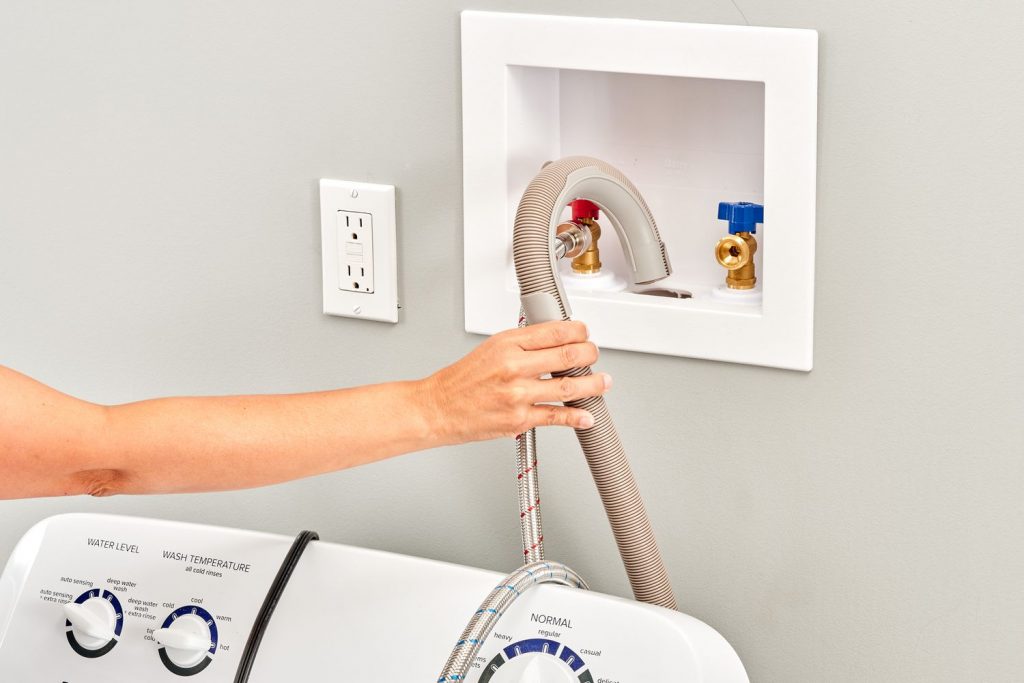When it comes to washing machines, the hoses play a crucial role in supplying water to each cycle and flushing out the dirty water. However, the requirements may vary depending on the type of washer you have.
Hence, can you run a washer with only one hose? Whether you’re facing a situation where you only have access to a single hose or are simply curious about the possibilities, I’ve got you covered.
In this comprehensive article, I’ll explore different scenarios and provide valuable insights to help you determine how to effectively run a washer with just one hose.
So, let’s dive in and discover the practical solutions that can make your laundry routine a breeze, even with limited hose availability.

Can You Run a Washer With Only One Hose?
Generally, washing machines come with three hoses: one for the cold water, one for the hot water, and one for the draining water. However, depending on the appliance model, some washers can work with one hose for cold and hot water.
Appliance manuals state whether you can run a washer with only one hose. Some models have heating systems, so you don’t need an additional hot water supply.
Alternative Washing Machine Hose mechanisms
No heating mechanism
If your washer doesn’t have its own heating mechanism, you can use one hose to connect to the water supply if you only want to wash on a cold water program. Otherwise, you’ll need to install a mixer tap and mark off several temperature settings.
Cold water fills only
For a washing machine that only works with one water valve, it’s essential to connect it to the cold water supply. However, in this case, you cannot connect the hot water supply to the cold valve on a cold-fill washing machine.
Some modern washing machines still come with two valves and are instructed to be used with both connected to the cold supply with a Y-piece adapter.
Washer Hoses – Related Problems and Solutions
How often should you replace washer hoses?
When it comes to how often you should change washer hoses, it isn’t a precise thing, as the conditions for every washer aren’t the same.
Sometimes the pressure can be higher, and differing valves cause more or less “water hammer” and a variety of other factors that affect hose life. That’s a long-winded way to say when a hose will fail.
Per manufacturer recommendations, all washing machine fill hoses should be replaced every five years. However, my advice is to follow the changes in their conditions so that after a number of years, if you notice that they are starting to have problems, you don’t know how long they will last.
You can change the hoses regularly and be more sure that you won’t get a failure whenever you need to wash a lot of clothes. It’s better to change them before the failure happens because you never know when the failure will occur, and it’s the total cost.
Read more: Do Washing Machines Come With A Drain Hose?
What types of washer hoses are there?
Functionality-wise, all washer hoses are the same, and they all use a ¾-inch normal pitch thread female connector on both ends. The only difference you will find will be the material the hose is made of, whether it is rubber nylon, steel braided, or abs.
The better the quality of the material, the more they will cost. You may be tempted to buy stainless steel braided hoses with a limited lifetime warranty. However, no matter the material, all hoses are made of the same rubber gasket inside the connector on each end.
This gasket fails 98% of the time, and it’s most likely to have the same lifespan in a rubber hose as it would in a steel braided hose.
Also read: When Did Washing Machines Become Cold Fill Only?
Can you fix a leaky washer hose?
No, you cannot fix leaky washer hoses; you can only replace them. They are cheap enough to buy them. The first thing you need to do is see if the leak is there; follow the process explained below to learn how to replace a washer hose.
- First, drag the machine out and turn off the water.
- Then, unscrew the hose from the washing machine, and if necessary, take adjustable pliers to remove it.
- Once you remove the old hose, attach the new hose to the same place and tighten it using channel locks but make sure you don’t make it too tight.
- If it is in a drain line, the process is a bit different. On those, the culprit is likely to be clamped at the washing machine at the bottom in the back where it attaches.
- Take the clamp off it and replace it by screwing the hose clamp. Ease the hose off the fitting and clean it all up.
You can use a couple of wraps of plumber tape or a swish of plumber’s putty, fit it back together, and clamp it tight; go easy so you won’t crack it.
Conclusion
Can you run a washer with only one hose? Running a washer with only one hose is possible, depending on the type and specifications.
Some washers have heating systems, eliminating the need for an additional hot water supply. If your washer doesn’t have its own heating mechanism, you can connect one hose to the water supply for cold water programs or install a mixer tap with temperature settings.
It’s important to refer to the appliance manual for specific instructions. Regularly replacing washer hoses is recommended, as their lifespan varies depending on factors such as water pressure and valve usage.
Remember that leaky hoses cannot be repaired and should be replaced. Follow proper steps to replace the hose, ensuring a secure connection and avoiding over-tightening.







